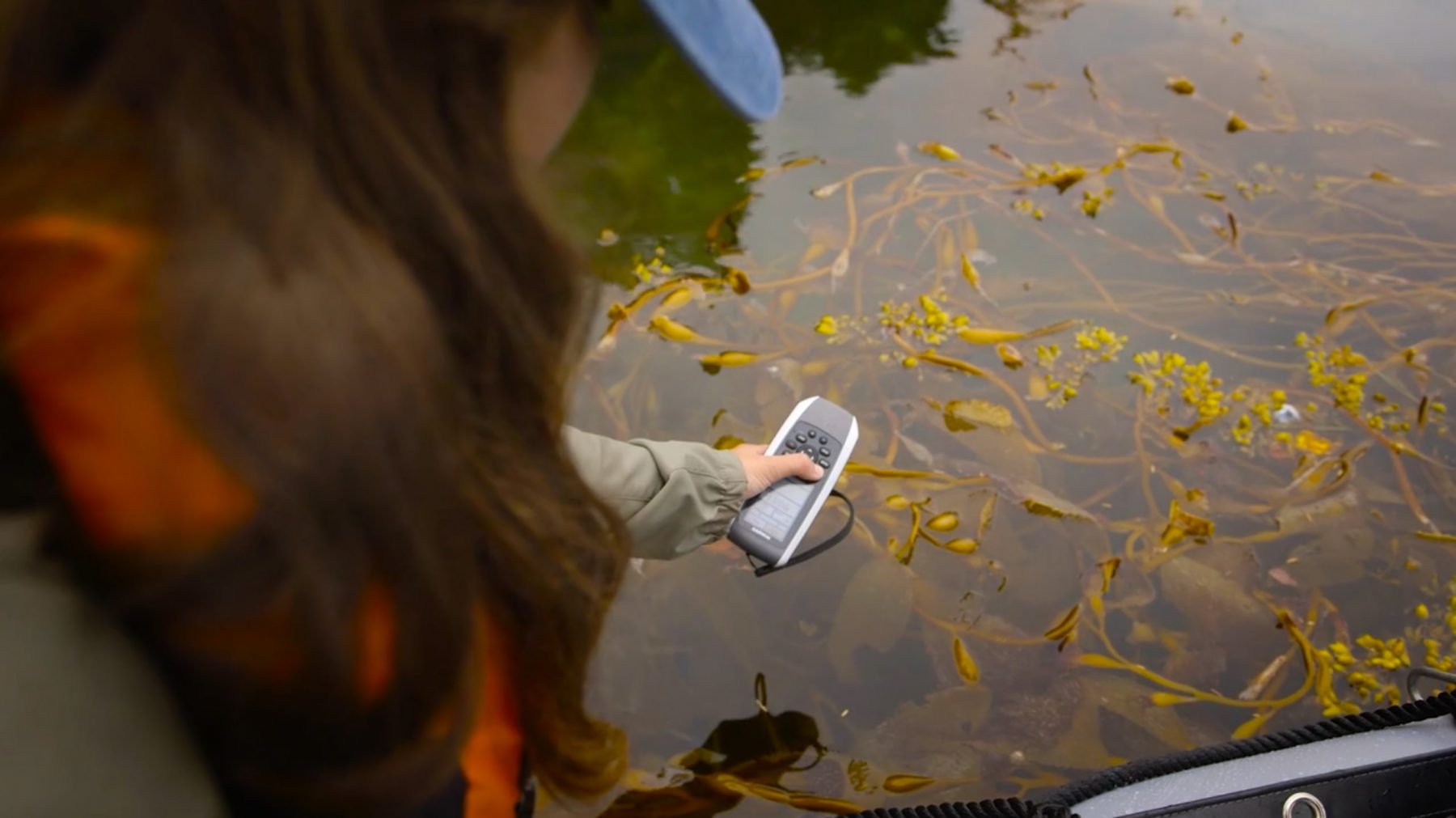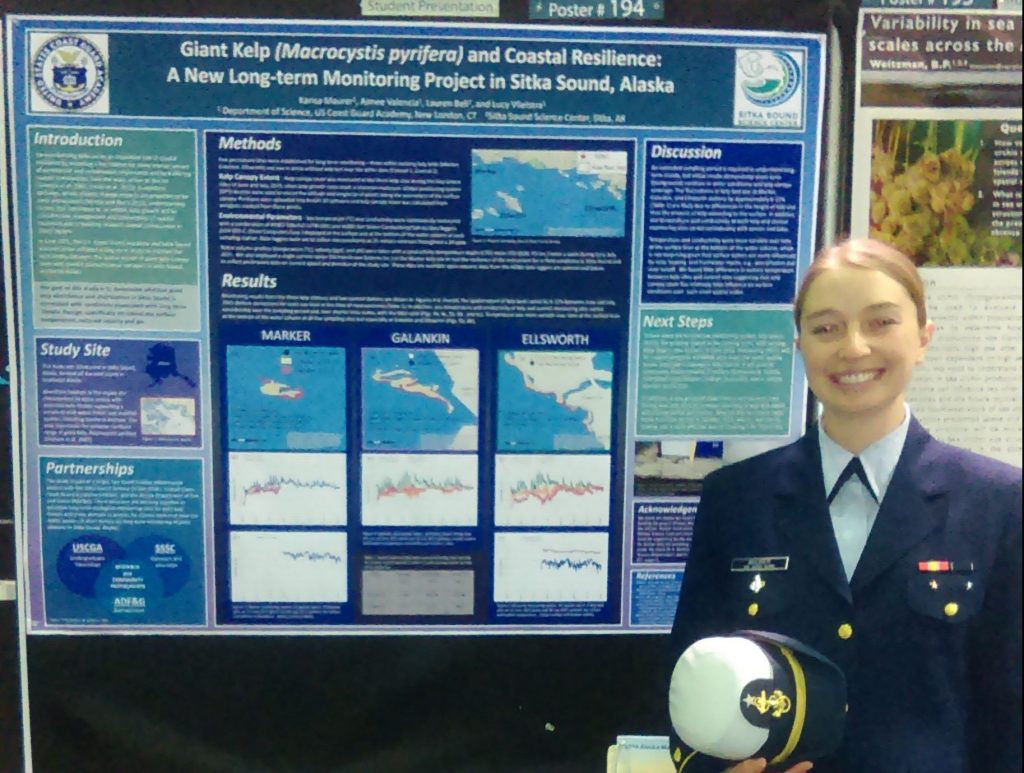
Surface spatial extent of the kelp canopy at each site varied more considerably between high and low tides than from growth or loss over the 6-week field season.
Temperature and salinity were more variable over time at the surface than at the bottom of the water column, which is likely due to the influence of river runoff and solar heating on surface water. Researchers found little difference in surface temperature between kelp sites and control sites, suggesting that kelp canopy cover has relatively little influence on surface conditions over such small spatial scales.
The USCGA provided generous support to enable the cadet interns to travel to Anchorage for the Alaska Marine Science Symposium in January 2016 and 2017, where they presented their summer work during the poster session. At this symposium, 2015 cadet intern Karisa Maurer was recognized as best undergraduate-level poster by Alaska SeaGrant.

